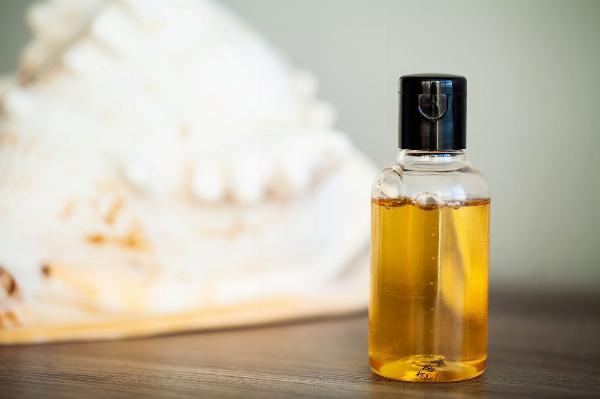Repair & Restore Damaged Hair with Nourishing Hair Oils

Strong 8k brings an ultra-HD IPTV experience to your living room and your pocket.
Introduction
Damaged hair is a common issue many people face, whether due to environmental stressors, heat styling, or chemical treatments. Hair can lose its natural luster and strength, becoming prone to breakage and split ends. However, there’s a solution that’s both natural and effective hair oil. In this article, we’ll explore the power of hair oil for restoring damaged hair, the benefits it offers, and how to incorporate it into your routine for healthier, more resilient locks.
Understanding Hair Damage
Hair damage can occur for a variety of reasons. Excessive use of heat styling tools, such as flat irons and curling wands, can strip hair of its natural moisture, leading to dryness and breakage. Similarly, chemical treatments like coloring, perming, or relaxing can weaken the hair’s structure, making it more susceptible to damage. Even everyday environmental factors, such as sun exposure and pollution, can contribute to the gradual deterioration of hair health. The good news is that with the right care and products, like hair oils, you can repair this damage and restore your hair's vitality.
The Role of Hair Oils in Repairing Damage
Hair oils have been used for centuries across different cultures as a remedy for dry, damaged hair. These oils are packed with essential fatty acids, vitamins, and antioxidants that nourish the hair and scalp. When applied, hair oils penetrate the hair shaft, providing deep conditioning that strengthens and revitalizes each strand. This not only helps in repairing existing damage but also creates a protective barrier that prevents further harm. Whether you're dealing with split ends, frizz, or overall dryness, hair oils can offer a versatile solution that caters to various hair types and concerns.
Types of Hair Oils and Their Benefits
Coconut Oil
Coconut oil is one of the most popular and effective oils for hair care. Rich in lauric acid, it penetrates deep into the hair shaft, providing moisture and reducing protein loss. This helps in minimizing split ends and breakage, making hair smoother and more manageable. Coconut oil also has antimicrobial properties, which can promote a healthier scalp by combating dandruff and irritation. Its lightweight nature makes it suitable for all hair types, from straight to curly.
Argan Oil
Argan oil, often referred to as "liquid gold," is a luxurious oil derived from the kernels of the argan tree found in Morocco. This oil is packed with vitamin E, antioxidants, and essential fatty acids that help repair hair by restoring moisture and elasticity. Argan oil is particularly beneficial for those with dry or frizzy hair, as it tames unruly strands and adds a natural shine. It also provides UV protection, shielding hair from the sun's harmful rays, which can further damage the hair.
Jojoba Oil
Jojoba oil is unique because its molecular structure closely resembles that of the natural oils produced by our scalp. This makes it an excellent choice for those with oily or sensitive scalps. Jojoba oil not only moisturizes but also helps in balancing oil production, preventing the scalp from becoming too oily or too dry. It’s also a great solution for strengthening hair, reducing hair loss, and promoting healthy growth.
Olive Oil
Olive oil is a kitchen staple that doubles as a powerful hair treatment. Its rich content of monounsaturated fats and vitamin E provides deep conditioning that softens and smooths the hair. Olive oil is especially beneficial for thick, coarse, or curly hair types, as it helps in detangling and reducing frizz. Additionally, olive oil can repair damage caused by heat and chemical treatments, restoring hair’s natural strength and shine.
How to Use Hair Oils for Best Results
Pre-Wash Treatment
One of the most effective ways to use hair oil is as a pre-wash treatment. Apply a generous amount of oil to your hair and scalp, massaging it in gently. Leave it on for at least 30 minutes to allow the oil to penetrate the hair shaft. You can even leave it on overnight for deeper conditioning. Wash your hair with a mild shampoo to remove the oil. This treatment helps in moisturizing and protecting your hair during the washing process, reducing the stripping of natural oils.
Leave-In Conditioner
Hair oils can also be used as a leave-in conditioner. After washing your hair, apply a small amount of oil to the ends of your hair to lock in moisture and add shine. This is particularly useful for dry or frizzy hair, as it helps in smoothing the cuticles and reducing flyaways. Be careful not to use too much oil, as it can weigh down your hair and make it look greasy.
Scalp Massage
A regular scalp massage with hair oil can stimulate blood circulation and promote hair growth. Warm a small amount of oil and gently massage it into your scalp using your fingertips. This not only nourishes the scalp but also relaxes the mind, reducing stress, which can be a contributing factor to hair loss. Regular scalp massages with oil can lead to stronger, thicker, and healthier hair over time.
Tips for Choosing the Right Hair Oil
Consider Your Hair Type
When choosing a hair oil, it’s important to consider your hair type and specific concerns. For example, if you have fine hair, you may want to opt for a lightweight oil like argan or jojoba to avoid weighing your hair down. If you have thick or curly hair, heavier oils like coconut or olive oil can provide the deep conditioning and frizz control you need.
Look for Quality Ingredients
Not all hair oils are created equal. Look for oils that are 100% pure and organic, free from added chemicals or synthetic fragrances. These additives can often do more harm than good, especially if you have sensitive skin or scalp. High-quality oils will provide better results and are less likely to cause irritation or build-up.
Experiment with Blends
Sometimes, a single oil may not address all your hair concerns. In such cases, experimenting with blends of different oils can be beneficial. Many commercial hair oils combine the benefits of various oils to create a product that targets multiple issues, such as dryness, damage, and frizz. You can also create your own blend at home, customizing it to suit your hair’s needs.
Conclusion
Incorporating hair oils into your hair care routine can be a game-changer for restoring and maintaining healthy hair. Whether you’re dealing with damage from heat, chemicals, or environmental factors, the nourishing properties of hair oils can help repair and rejuvenate your strands. By choosing the right oil and using it effectively, you can achieve stronger, shinier, and more resilient hair. Remember, consistency is key, and with regular use, you’ll soon notice a significant improvement in your hair’s texture and overall health.
Note: IndiBlogHub features both user-submitted and editorial content. We do not verify third-party contributions. Read our Disclaimer and Privacy Policyfor details.






